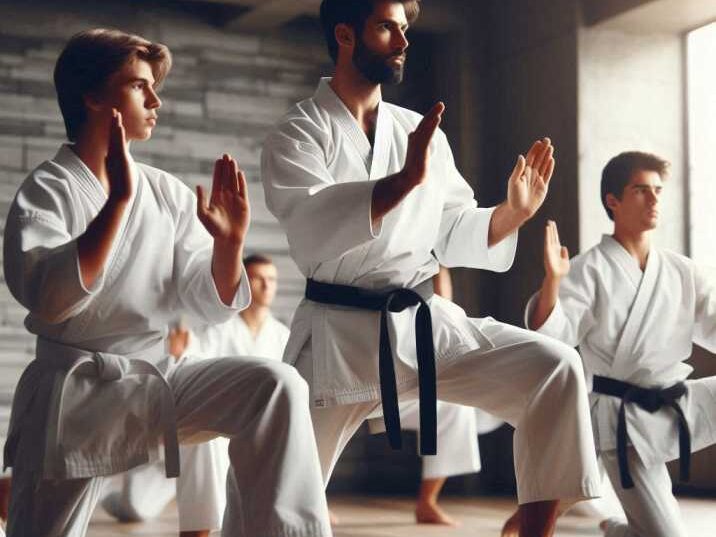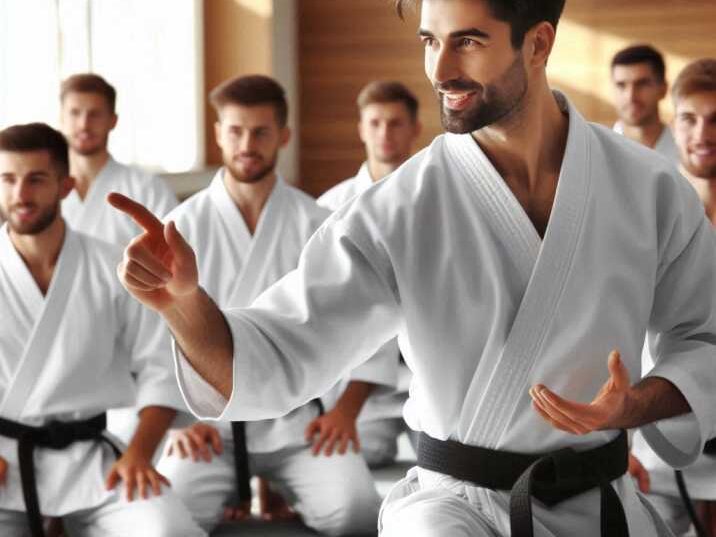what is Karate?
Table of Contents
Karate is a martial art that originated in Japan and involves various techniques, including punches, kicks, and blocks. It is not just a physical activity but also a discipline that teaches self-defence, respect, and mental focus.

Introduction to Karate
Karate, meaning “empty hand” in Japanese, is a striking art that emphasizes hand techniques and powerful movements. It was developed on the Ryukyu Islands, which are now part of Okinawa, Japan. Karate is practised worldwide and is known for its rigorous training and deep-rooted traditions.
The History of Karate
Karate has a rich history that dates back hundreds of years. It evolved from indigenous Ryukyuan martial arts influenced by Chinese kung fu. The modern form of Karate was systematized in the early 20th century by Gichin Funakoshi, who introduced it to mainland Japan.
Key Historical Milestones about What is Karate?
| Year | Event |
|---|---|
| Early 1900s | Gichin Funakoshi systematizes Karate |
| 1922 | First public demonstration in Tokyo |
| 1949 | Japan Karate Association (JKA) established |
| 1960s | Karate spreads globally |
Benefits of Practicing Karate
Practising Karate offers numerous benefits beyond physical fitness. It helps improve focus, discipline, and self-confidence. Here are some of the key benefits:
Physical Fitness
Karate enhances strength, flexibility, and endurance. The rigorous training involves various exercises and movements that work out the entire body. Kicking, punching, and blocking help build muscle strength, while the repetitive nature of these activities improves cardiovascular health and stamina. Additionally, the stretching and flexibility exercises in Karate prevent injuries and improve overall body coordination.
Mental Discipline
Karate develops concentration, patience, and perseverance. Students must focus intently on their techniques and forms, which trains the mind to concentrate better in all areas of life, including school. The repetitive practice required to master techniques teaches patience, while the challenges and gradual progression through belt levels instil a sense of perseverance and determination.
Self-Defense
Karate teaches practical techniques for personal safety. Students learn various self-defence moves that can be used to protect themselves in dangerous situations. These techniques include strikes, blocks, and evasive maneuvers. The training also includes situational awareness and quick decision-making, which are crucial for effectively defending oneself.
Respect and Etiquette
Karate instils respect for others and traditional martial arts values. From the very beginning, students are taught to respect their instructors, peers, and the dojo (training hall). Bowing and other traditional practices emphasize humility and respect. The discipline required in Karate fosters a sense of responsibility and integrity, shaping students into respectful and well-mannered individuals.
By incorporating these benefits into their lives, Karate practitioners can experience a well-rounded development that positively impacts both their physical and mental well-being.

Karate Training
Karate training involves a combination of kata, kihon, and kumite. Each component plays a crucial role in developing a well-rounded martial artist.
Kata
Kata are pre-arranged sequences of movements that simulate combat against multiple attackers. These sequences are practised solo and consist of a series of offensive and defensive techniques performed in a specific order. Kata help students learn proper techniques and improve their form. By practising kata, students develop muscle memory, balance, and coordination. Each kata has a unique pattern and purpose, teaching students various aspects of combat, such as timing, rhythm, and spatial awareness. Kata also serves to preserve traditional techniques and principles passed down through generations.
Kihon
Kihon, meaning “basics,” involves practising fundamental techniques like punches, kicks, and blocks. This foundational training is essential for building strong Karate skills. Kihon focuses on perfecting the basic movements and stances, which are the building blocks for more advanced techniques. Through repetitive practice, students develop precision, power, and control in their movements. Kihon drills emphasize correct posture, breathing, and the efficient use of energy. Mastery of kihon ensures that students have a solid foundation to build upon as they progress in their Karate training.
Kumite
Kumite is a sparring practice, where students apply their techniques against an opponent. It helps develop timing, speed, and strategy. In Kumite, students practice attacking and defending in a controlled environment, allowing them to test their skills and adapt to different opponents. There are various types of kumite, ranging from pre-arranged sparring to free sparring, where students have more freedom to use different techniques. Kumite teaches students how to react under pressure, improving their reflexes and decision-making abilities. It also fosters a sense of respect and sportsmanship, as students learn to engage in combat safely and fairly.
By integrating these three components—kata, kihon, and kumite—Karate training provides a comprehensive approach that enhances both the physical and mental aspects of martial arts. Students develop the technical skills, discipline, and strategic thinking necessary to become proficient martial artists.
Training Focus and Discipline
Training requires concentration and discipline, which can translate to improved focus in school and other activities. Karate students learn to set goals, work hard, and overcome challenges.
The Belt System
Karate uses a coloured belt system to signify a student’s progress. Beginners start with a white belt and advance through various colours, culminating in the coveted black belt.
Belt Colors and Their Meanings
| Belt Color | Meaning |
|---|---|
| White | Beginning, purity |
| Yellow | First rays of knowledge |
| Orange | Growing knowledge |
| Green | Growth and development |
| Blue | Depth of knowledge |
| Brown | Maturity and proficiency |
| Black | Mastery and continuous learning |
Conclusion
Karate is more than just a martial art; it is a way of life that promotes physical fitness, mental discipline, and respect. Whether you are looking to improve your focus, learn self-defence, or embrace a new challenge, Karate has something to offer everyone.
FAQs
- What does Karate mean?
- Karate means “empty hand” in Japanese, reflecting its focus on unarmed combat techniques.
- Who introduced Karate to Japan?
- Gichin Funakoshi is credited with introducing Karate to mainland Japan in the early 20th century.
- What are the main components of Karate training?
- The main components are kata (forms), kihon (basics), and kumite (sparring).
- How can Karate improve focus in school?
- Karate training requires concentration and discipline, skills that can help students focus better on their studies.
- What is the highest belt colour in Karate?
- The highest belt colour is black, symbolizing mastery and continuous learning.

